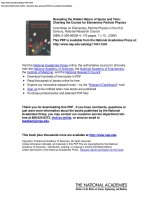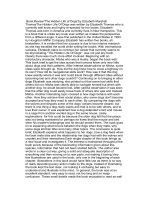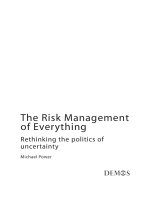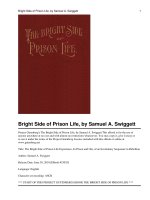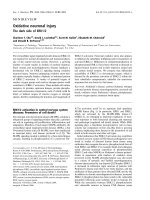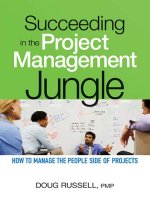INTRODUCTION - The Hidden Side of Everything
Bạn đang xem bản rút gọn của tài liệu. Xem và tải ngay bản đầy đủ của tài liệu tại đây (1.26 MB, 14 trang )
INTRODUCTION:
The Hidden Side of
Everything
Anyone living in the United States in the early 1990s and paying even
a whisper of attention to the nightly news or a daily paper could be
forgiven for having been scared out of his skin.
The culprit was crime. It had been rising relentlessly—a graph
plotting the crime rate in any American city over recent decades
looked like a ski slope in profile—and it seemed now to herald the
end of the world as we knew it. Death by gunfire, intentional and oth-
erwise, had become commonplace. So too had carjacking and crack
dealing, robbery and rape. Violent crime was a gruesome, constant
companion. And things were about to get even worse. Much worse.
All the experts were saying so.
The cause was the so-called superpredator. For a time, he was
everywhere. Glowering from the cover of newsweeklies. Swaggering
his way through foot-thick government reports. He was a scrawny,
big-city teenager with a cheap gun in his hand and nothing in his
heart but ruthlessness. There were thousands out there just like him,
FREAKONOMICS
we were told, a generation of killers about to hurl the country into
deepest chaos.
In 1995 the criminologist James Alan Fox wrote a report for the
U.S. attorney general that grimly detailed the coming spike in mur-
ders by teenagers. Fox proposed optimistic and pessimistic scenarios.
In the optimistic scenario, he believed, the rate of teen homicides
would rise another 15 percent over the next decade; in the pessimistic
scenario, it would more than double. “The next crime wave will get so
bad,” he said, “that it will make 1995 look like the good old days.”
Other criminologists, political scientists, and similarly learned
forecasters laid out the same horrible future, as did President Clinton.
“We know we’ve got about six years to turn this juvenile crime thing
around,” Clinton said, “or our country is going to be living with
chaos. And my successors will not be giving speeches about the won-
derful opportunities of the global economy; they’ll be trying to keep
body and soul together for people on the streets of these cities.” The
smart money was plainly on the criminals.
And then, instead of going up and up and up, crime began to fall.
And fall and fall and fall some more. The crime drop was startling in
several respects. It was ubiquitous, with every category of crime falling
in every part of the country. It was persistent, with incremental de-
creases year after year. And it was entirely unanticipated—especially
by the very experts who had been predicting the opposite.
The magnitude of the reversal was astounding. The teenage mur-
der rate, instead of rising 100 percent or even 15 percent as James
Alan Fox had warned, fell more than 50 percent within five years. By
2000 the overall murder rate in the United States had dropped to its
lowest level in thirty-five years. So had the rate of just about every
other sort of crime, from assault to car theft.
Even though the experts had failed to anticipate the crime drop—
which was in fact well under way even as they made their horrifying
2
Introduction: The Hidden Side of Everything
predictions—they now hurried to explain it. Most of their theories
sounded perfectly logical. It was the roaring 1990s economy, they
said, that helped turn back crime. It was the proliferation of gun con-
trol laws, they said. It was the sort of innovative policing strategies put
into place in New York City, where murders would fall from 2,262 in
1990 to 540 in 2005.
These theories were not only logical; they were also encouraging,
for they attributed the crime drop to specific and recent human
initiatives. If it was gun control and clever police strategies and better-
paying jobs that quelled crime—well then, the power to stop crimi-
nals had been within our reach all along. As it would be the next time,
God forbid, that crime got so bad.
These theories made their way, seemingly without friction, from
the experts’ mouths to journalists’ ears to the public’s mind. In short
course, they became conventional wisdom.
There was only one problem: they weren’t true.
There was another factor, meanwhile, that had greatly contributed
to the massive crime drop of the 1990s. It had taken shape more than
twenty years earlier and concerned a young woman in Dallas named
Norma McCorvey.
Like the proverbial butterfly that flaps its wings on one continent
and eventually causes a hurricane on another, Norma McCorvey dra-
matically altered the course of events without intending to. All she
had wanted was an abortion. She was a poor, uneducated, unskilled,
alcoholic, drug-using twenty-one-year-old woman who had already
given up two children for adoption and now, in 1970, found herself
pregnant again. But in Texas, as in all but a few states at that time,
abortion was illegal. McCorvey’s cause came to be adopted by people
far more powerful than she. They made her the lead plaintiff in a
class-action lawsuit seeking to legalize abortion. The defendant was
Henry Wade, the Dallas County district attorney. The case ultimately
3
FREAKONOMICS
made it to the U.S. Supreme Court, by which time McCorvey’s name
had been disguised as Jane Roe. On January 22, 1973, the court ruled
in favor of Ms. Roe, allowing legalized abortion throughout the
United States. By this time, of course, it was far too late for Ms.
McCorvey/Roe to have her abortion. She had given birth and put the
child up for adoption. (Years later she would renounce her allegiance
to legalized abortion and become a pro-life activist.)
So how did Roe v. Wade help trigger, a generation later, the greatest
crime drop in recorded history?
As far as crime is concerned, it turns out that not all children are
born equal. Not even close. Decades of studies have shown that a
child born into an adverse family environment is far more likely than
other children to become a criminal. And the millions of women
most likely to have an abortion in the wake of Roe v. Wade—poor, un-
married, and teenage mothers for whom illegal abortions had been
too expensive or too hard to get—were often models of adversity.
They were the very women whose children, if born, would have been
much more likely than average to become criminals. But because of
Roe v. Wade, these children weren’t being born. This powerful cause
would have a drastic, distant effect: years later, just as these unborn
children would have entered their criminal primes, the rate of crime
began to plummet.
It wasn’t gun control or a strong economy or new police strategies
that finally blunted the American crime wave. It was, among other
factors, the reality that the pool of potential criminals had dramati-
cally shrunk.
Now, as the crime-drop experts (the former crime doomsayers)
spun their theories to the media, how many times did they cite legal-
ized abortion as a cause?
Zero.
4
Introduction: The Hidden Side of Everything
It is the quintessential blend of commerce and camaraderie: you hire
a real-estate agent to sell your home.
She sizes up its charms, snaps some pictures, sets the price, writes a
seductive ad, shows the house aggressively, negotiates the offers, and
sees the deal through to its end. Sure, it’s a lot of work, but she’s get-
ting a nice cut. On the sale of a $300,000 house, a typical 6 percent
agent fee yields $18,000. Eighteen thousand dollars, you say to your-
self: that’s a lot of money. But you also tell yourself that you never
could have sold the house for $300,000 on your own. The agent knew
how to—what’s that phrase she used?—“maximize the house’s value.”
She got you top dollar, right?
Right?
A real-estate agent is a different breed of expert than a criminolo-
gist, but she is every bit the expert. That is, she knows her field far bet-
ter than the layman on whose behalf she is acting. She is better
informed about the house’s value, the state of the housing market,
even the buyer’s frame of mind. You depend on her for this informa-
tion. That, in fact, is why you hired an expert.
As the world has grown more specialized, countless such experts
have made themselves similarly indispensable. Doctors, lawyers, con-
tractors, stockbrokers, auto mechanics, mortgage brokers, financial
planners: they all enjoy a gigantic informational advantage. And they
use that advantage to help you, the person who hired them, get ex-
actly what you want for the best price.
Right?
It would be lovely to think so. But experts are human, and humans
respond to incentives. How any given expert treats you, therefore, will
depend on how that expert’s incentives are set up. Sometimes his in-
centives may work in your favor. For instance: a study of California
auto mechanics found they often passed up a small repair bill by
letting failing cars pass emissions inspections—the reason being that
5



